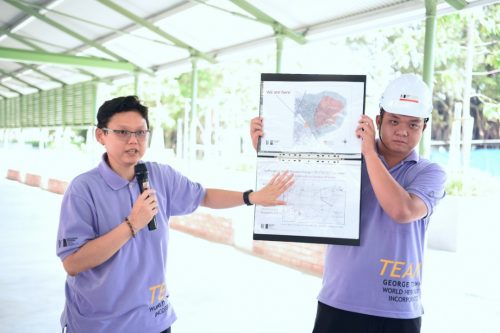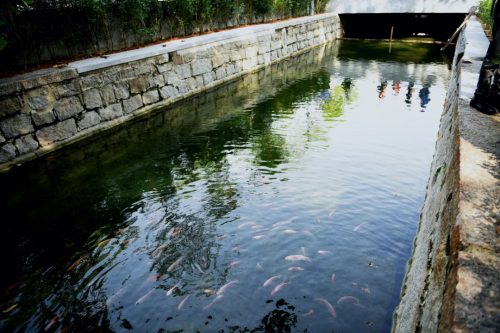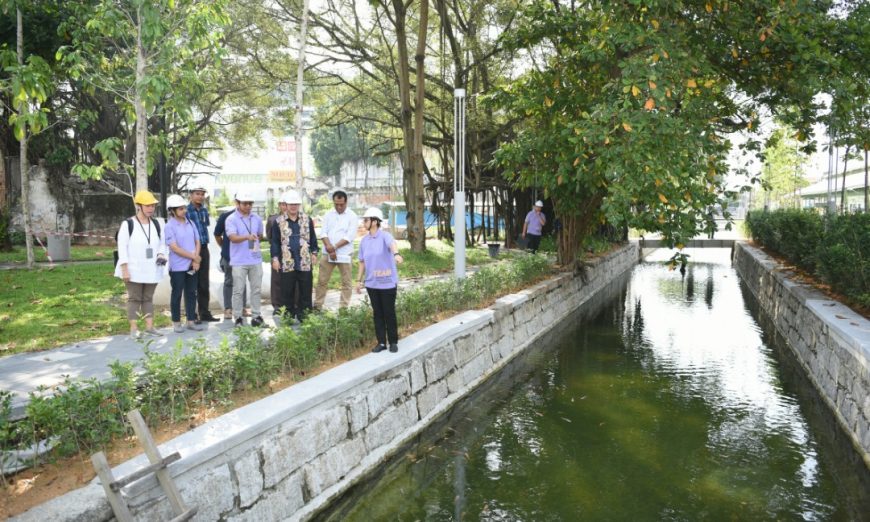THE conservation works of Sia Boey, its archaeological sites and the landscaping of the area are set to be completed next month (September).
Touted to be the first Urban Archaeological Park in Malaysia, Sia Boey has a long interesting history and the process of rejuvenating the site has been rather challenging.
George Town World Heritage Incorporated (GTWHI) general manager Dr Ang Ming Chee said the Sia Boey Rejuvenation Project includes creating a Prangin bypass, archaeological study of the old Prangin Canal Basin and police barracks, rehabilitation of the Prangin Canal, rescue archaeology of the Prangin Canal and conservation of the old Prangin Market, archaeological sites and landscaping.

Recently, the Prangin Canal was in the spotlight after it was thoroughly cleaned and rejuvenated into a water feature that flows within the new proposed park. The canal also received critical comments from Penang Forum.
Its committee member Khoo Salma Nasution had reportedly said that no river (open system) had been rehabilitated involving the canal as part of the Sia Boey Rejuvenation Project.
She had said that a section of the Prangin Canal structure had been converted into a pond and filled with water, while the storm water drain was diverted into a parallel culvert.
She had also said that ideally, the project could have been a real river clean-up, starting from upstream, to upgrade Sungai Prangin from ‘not suitable for body contact’ to ‘suitable for body contact’ recreational usage.
Dr Ang said the plans for the Prangin diversion were presented to and approved by the Penang Island City Council (MBPP) and the Technical Review Panel (TRP).
“The TRP committee includes Penang Heritage Trust (PHT), which is also a member of the Penang Forum coalition.
“They know very well about the rejuvenation programme and they know very well about the diversion. I checked the minutes, the representative of PHT attended,” she told a press conference after a technical briefing at Sia Boey on Thursday.
Dr Ang said the Prangin Canal rehabilitation project only involved 220m of the 11.7km canal.

“The approximate length of 11.7km was taken from the Map of George Town Year 1881 (Governor of the Straits Settlement).
“I would like to stress again that the Prangin Canal is not a river as there is no natural source of water.
“The Prangin Channel Ditch or commonly known as Prangin Canal functions primarily as a monsoon or storm water drain. It collects water runoff from roads, and possibly from septic tanks and kitchens.
“So why must we create a diversion? Why can’t we clean the whole Prangin Canal?
“The upstream catchment area is about 278 acres and it extends from Burmah Road, Anson Road, Muntri Street, Beach Street and Magazine Road; encompassing a vast portion of the Unesco-listed George Town World Heritage Site.
“Most portions are underground with only a few surfaced canal sections, hence, it is complicated. It is good that now people are keen to know about ditches,” Dr Ang said.
Dr Ang also said at least 177 new trees were planted for the project.
Penang Development Corporation (PDC) senior deputy general manager (Implementation) Datuk Yeoh Lean Huat said the diversion was necessary to prevent discharge from the upstream from flowing into the rehabilitated Prangin Canal.
“The upstream catchment area is a developed area.
“For the 278 acres, we assume that each acre has 30 houses. We have over 8,000 houses.
“These houses are discharging into ditches. Some may have old septic tanks. It will be a challenge to do treatment.
“There is a treatment plant at the shorefront before the discharge is released into the sea. But there is no sufficient area for us to build a treatment plant to treat the discharge before it enters the canal,” Yeoh said.
He added that PDC was willing to open up the bypass, provided that the water from the upstream (278 acres) is clean.
“The diversion is not permanent. It can be removed,” he said.
Yeoh said the present Prangin Canal could serve as a on-site detention.
“We will not load the main monsoon drain. Our Prangin Canal can cater to lots of water if there is a heavy rainfall.
“Water within our site will flow into the canal and stored temporarily until we release the water,” he said.
Story by Christopher Tan
Pix by Ahmad Adil Muhamad
Video by Law Suun Ting

